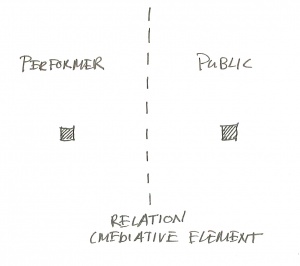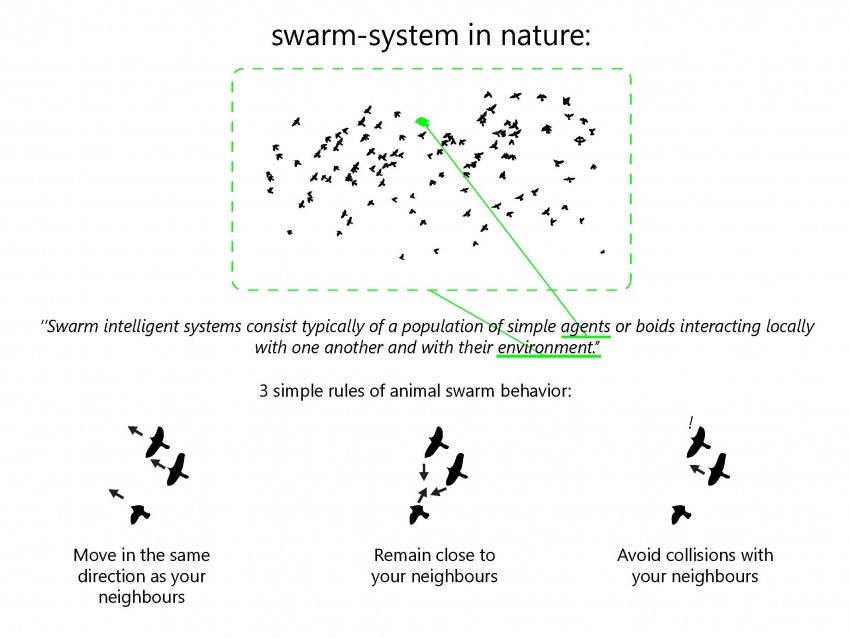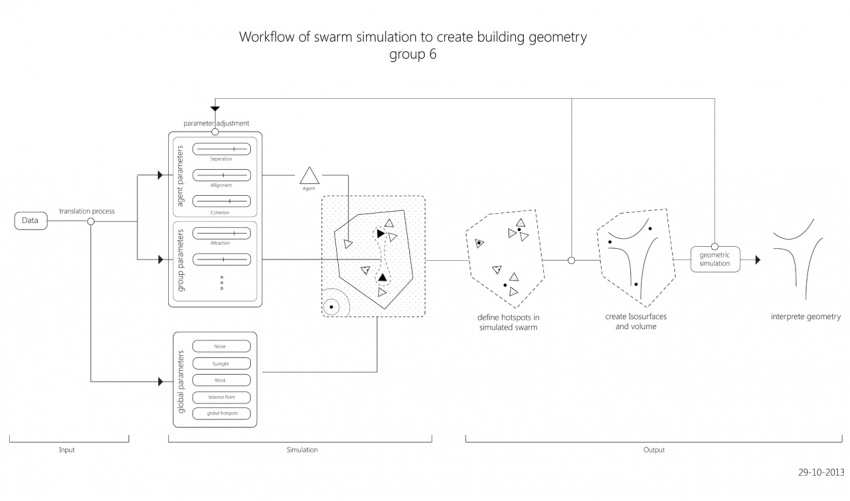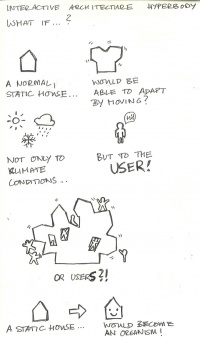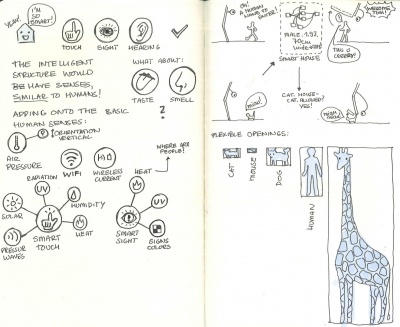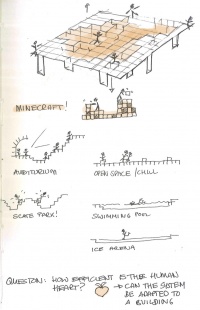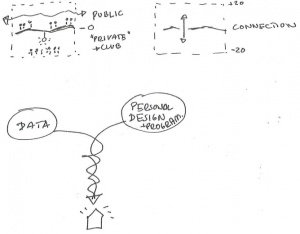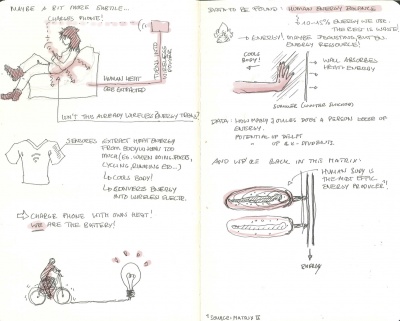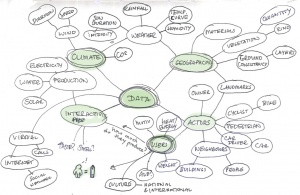project06:Expert1
Concept
Design starting points and research topics
The starting points for the design the building part within Group 6's voronoi cell are as follows:
1. Interactively: the building interacts mainly on the theme of (sound)waves, being sound waves primarily and electromagnetic waves (mostly light) secondarily.
2. Programmatically, the building contains a large performance space and several smaller 'absence' cells.
3. Spatially: the building addresses the theme of continuity of space
1 | Interaction: waves
The main theme of interaction is (sound)waves (frequency and volume)
WHY
Triggers emotions easily.
WHAT
Spatial and visual interpretation of sound
By using the principles of cymatics, as seen in the video below, is an interesting way of achieving this.
- Directing/amplifying/reducing sound towards 'hotspots'
- Energy harvesting (links)
- Spatial and visual reinterpertation (e.g. Cymatics)
- Wave interaction with human body
HOW
2 | Programme: performance space & absense cells
Performance space
The performance space is (programmatically) the most important important part of Group 6's building section. A performance space is, in our definition, a space where performances can take place. A performance requires
1. a performer
2. a public
3. a relation between public and performer
This relation is conventionally any kind of division: the (height) division between stage and place for spectators for example.
Types of performances:
- concert
- film projection
- theatre play
- workshop
- etc.
The goal is to find a type, combine a type, invent a dynamic type that works optimally for all performances in an integrated manner.
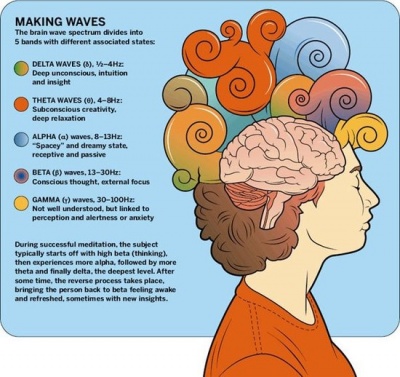
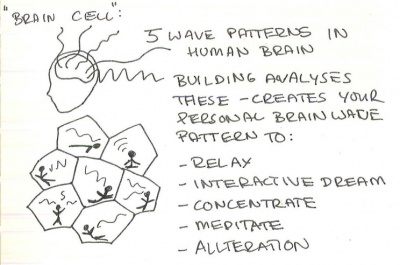
Absense cells
People needs special spaces to take a break from the outside world: we can call them "Absence spaces" They provide what the users are unconsciounly looking for.
relaxation (triggering brain waves to, for instance, high frequencies) meditation (triggering brain waves to, for instance, medium frequencies) chill out (triggering brain waves to, for instance, low frequencies)
This system can evolve into an "alteration space" or "distortion space" or "illusion space"
The exterior background sound (outside world) will trigger a new 4D dimension inside these cells throughout visual and hearing perceptions.
it's intended as a short stay time: from minutes to a maximum of a few hours.
3 | Spatial concept: continous space
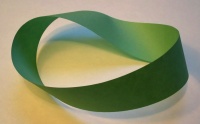

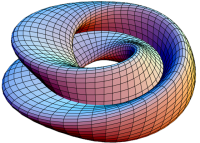

The entire building's concept is that of a sponge. Group 6's cell continuous to work on that principle. The idea is to create one continuous shape that forms the building: floor is façade is roof. To illustrate this concept a few references are included. These concepts relate to real continuity and perceived continuity, wich are both important.
Möbius strip
The first is the Möbius strip. The Mübius strip is a 3 dimensional object that consists of one surface and has only one edge. You could go 'around' it ad infinitum. This is the sort of continuity that we are looking for.
Klein bottle
Another concept that can be referred to is the Klein bottle. The Klein bottle, like the Möbius strip also consists of one continuous surface, but whereas the Möbius strip is an object that could exist in real life, the Klein bottle is an impossible object. It cannot exist in 3 dimensions (of space). Yet the concept behind it is still interesting, because in architecture one can create illusions. When one combines both the Klein bottle principles and the Möbius strip principles a so-called Klein bagel emerges.
Penrose triangle
Lastly the Penrose triangle is to be mentioned. Like the Klein bottle, it is impossible to construct this triangle in the 3 spatial dimensions available. The interesting concept of the Penrose triangle is that the point of view of observation determines if it to be seen as such or if it is a seemingly totally different object. The play on optical illusion is very powerful.

Vertical continuity
The most interesting aspects of the continous space is probably vertical continuity. A floor is a a vertical continuity whereas a wall is a vertical discontinuity, or barrier. A way to overcome this barrier is to go diagonal, or oblique.
The oblique function of Paul Virilio and Claude perret is a conmversation between the two that talks about this topic. To quote from the description of the book on amazon.com:
"...investigated a new kind of architectural and urban order that forced the body to adapt to disequilibrium, encouraging vertigo and promoting fluid, continuous movement."
In built architecture, some references can be found. All have the oblique as the main way vertical circulation. In the pictures below there are: Kunsthal (OMA), Mercedes-Benz museum (UN Studio) and Philharmonie de Paris (unbuilt, Jean Nouvel). Some are linear, some are bended, some are multiple, intertwined oblique systems, such as the Mercedez Benz museum by UN Studio.
Thoughts about...
Interactive Buildings
Interactive Technology
Data
References
http://www.youtube.com/watch?v=xEO3MViBZ90&feature=youtu.be&hd=1
Materials
http://www.textile-architektur.de/projekte-referenzen/ http://www.baunetz.de/meldungen/Meldungen-Buecher_im_BauNetz_829719.html?bild=3 http://www.architonic.com/de/ntsht/bau-stoff-textile-architektur-teil-1/7000625
Translation of Data into Geometry
http://en.wikipedia.org/wiki/Delaunay_triangulation
http://en.wikipedia.org/wiki/Alpha_shape
http://en.wikipedia.org/wiki/Beta_skeleton
http://en.wikipedia.org/wiki/Largest_empty_sphere
Waves and Brainwaves
What are Brainwaves? Have a look at your own: http://gizmodo.com/this-optical-illusion-lets-you-see-your-own-brain-waves-1179214498
Swarm Intelligence
Swarm and Sound:
http://www.youtube.com/watch?v=1z47AITiAlI
http://vimeo.com/12536408#at=0
Multiswarm optimization:
http://en.wikipedia.org/wiki/Multi-swarm_optimization#cite_ref-1
http://ieeexplore.ieee.org/xpls/abs_all.jsp?arnumber=6256566
Agent definition:
http://en.wikipedia.org/wiki/Intelligent_agent
Harmony Search:
http://en.wikipedia.org/wiki/Harmony_search
http://harry.me/blog/2011/07/05/neat-algorithms-harmony-search/
http://www.youtube.com/watch?v=sRp8m9_BK9c
Global Brain:
http://en.wikipedia.org/wiki/Global_brain
Social (Media)
Tweet Map:
http://www.mapbox.com/labs/twitter-gnip/brands/#7/52.140/7.817
Social Life of Urban Spaces (Video):
http://vimeo.com/6821934
misc
The invisible bike helmet: http://jalopnik.com/swedes-develop-invisible-bike-helmet-1460189477
Map using MDS Method: http://www.zeit.de/politik/deutschland/wahlland-2013
Interaction between Human and Environment: http://www.youtube.com/watch?v=lX6JcybgDFo
Power harvest lightning: http://www.youtube.com/watch?v=RJTl2oqaWPs
Brain waves: http://www.altering-perspectives.com/2013/04/the-brain-wave-spectrum-and-binaural.html
Binaural Beats: http://en.wikipedia.org/wiki/Binaural_beats
http://www.youtube.com/watch?v=dX_xgkv9MT8
Harvesting sound energy:
Acoustic Fiber:
http://web.mit.edu/newsoffice/2010/acoustic-fibers-0712.html
http://www.technewsdaily.com/745-new-acoustic-fibers-can-sing-and-hear-sounds.html
http://www.redicecreations.com/article.php?id=11766
http://www.nature.com/nmat/journal/v9/n8/abs/nmat2792.html
Report: http://dspace.mit.edu/openaccess-disseminate/1721.1/78317
Acoustic conversion into electr:
http://spectrum.ieee.org/nanoclast/semiconductors/nanotechnology/piezoelectric-nanowires-enable-energy-generation-through-sound
http://www.nanowerk.com/spotlight/spotid=18171.php?utm_campaign=Nano+Report+-+Google+News&utm_medium=Twitter&utm_source=SNSanalytics
Conversion of heat into sound, then electr:
http://www.unews.utah.edu/old/p/053007-1.html
sound -> hydrogen
http://www.newscientist.com/article/dn18661-crystals--sound--water--clean-hydrogen-fuel.html?DCMP=OTC-rss&nsref=online-news#.UqDBzUDh5no
http://personal.stevens.edu/~mmohdisa/home.html
http://spectrum.ieee.org/consumer-electronics/gadgets/acoustic-energy-harvesters-gaining-volume
Prototyping
Great Projects, MIT Seminar High-Low-Tech: http://hlt.media.mit.edu/?cat=5
Especially: http://technolojie.com/category/featured-projects/
Sensor inside human body: http://www.theverge.com/2012/8/8/3177438/cyborg-america-biohackers-grinders-body-hackers
http://www.zeit.de/digital/internet/2013-10/biohacker-tim-cannon-quantified-self
